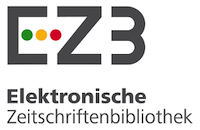A comparative study between two audience response tools in university classrooms
Un estudio comparativo entre dos herramientas de respuesta de audiencia en las aulas universitarias
##plugins.themes.bootstrap3.article.main##
The aim of this paper is to investigate the influence of the use of technological tools in university classrooms. In particular, we analyze and evaluate the application of two free audience-response tools (specifically, Socrative and Kahoot!) as tools that foster students’ participation in and attendance to the theoretical sessions and facilitate the teaching-learning process. It is analyzed whether these tools can be used to motivate and foster participation and to facilitate learning. Furthermore, students’ opinion on the usefulness of these tools in the classroom and as teaching-learning methods is also analyzed. The study sample is made up of 60 students at a Spanish public university in the Publicity and Public Relations and Audiovisual Communication programs. This research is innovative in the area of ICT and has implication for university teachers due to the relevance of the use of new technologies in the classroom with the aim of attracting students’ participation and attendance while at the same time motivating them to study and learn
Downloads
##plugins.themes.bootstrap3.article.details##
Al-Emran, M. et al. (2016). Investigating attitudes towards the use of mobile learning in higher education. Computers in Human Behavior, 56, 93-102.
https://doi.org/10.1016/j.chb.2015.11.033
Ally, M. and Prieto-Blázquez, J. (2014). What is the future of mobile learning in education? RUSC. Universities and Knowledge Society Journal, 11 (1), 142-151.
https://doi.org/10.7238/rusc.v11i1.2033
Balta, N. and Tzafilkou, K. (2019). Using Socrative software for instant formative feedback in physics courses. Education and Information Technologies, 24 (1), 307-323.
https://doi.org/10.1007/s10639-018-9773-8
Bicen, H. and Kocakoyun, S. (2018). Perceptions of students for gamification approach: Kahoot as a case study. International Journal of Emerging Technologies in Learning, 13 (02), 72-93.
https://doi.org/10.3991/ijet.v13i02.7467
Brebera, P. (2016). Ways of enriching foreign language courses at the university: Digital badges and mobile learning. Recuperado de https://library.iated.org/ view/BREBERA2016WAY
https://doi.org/10.21125/inted.2016.0586
Crompton, H. (2013). A historical overview of mobile learning: Toward learner-centered education. En Berge, Z.L. and Muilenburg, L.Y. (Ed.), Handbook of mobile learning (pp. 3-14). New York, USA: Routledge.
Dervan, P. (2014). Increasing in-class student engagement using Socrative (an online Student Response System). AISHE-J: The All Ireland Journal of Teaching and Learning in Higher Education, 6 (3), 1801-18013.
Fundación Telefónica. (2014). Mi móvil al servicio de la comunidad: aprender y compartir. Recuperado de https://observatorio.profuturo.education/laboratorio-m-learning/mi-movil-al-servicio-de-la-comunidad-aprender-y-compartir/.
Hamdan, K. and Amorri, A. (2016). Mobile learning devices to assist dyslexic students to improve their English reading proficiency. Recuperado de https:// library.iated.org/view/HAMDAN2016MOB.
https://doi.org/10.21125/inted.2016.0921
Herrington, A. (2009). Using a smartphone to create digital teaching episodes as resources in adult education. En Herrington, J. et al. (Ed.), New technologies, new pedagogies: Mobile learning in higher education. Wollongong, Australia: University of Wollongong.
Humnante-Ramos, P. and García-Peñalvo, F.J. (2013). Contribution of virtual classrooms to the personal learning environments (PLE) of the students of the career of informatics applied to education of national university of Chimborazo. Recuperado de https://dl.acm.org/citation.cfm?id=2536614.
https://doi.org/10.1145/2536536.2536614
Iwamoto, D.H. et al. (2017). Analyzing the Efficacy of the Testing Effect Using Kahoot™ on Student Performance. Turkish Online Journal of Distance Education, 18 (2), 80-93.
https://doi.org/10.17718/tojde.306561
Kapp, K.M. (2012). The Gamification of Learning and Instruction: Case-Based Methods and Strategies for Training and Education. New York, USA: John Wiley & Sons.
https://doi.org/10.1145/2207270.2211316
Laouris, Y. and Eteokleous, N. (2005). We need an educationally relevant definition of mobile learning. Recuperado de https://www.semanticscholar. org/paper/WE-NEED-AN-EDUCATIONALLY-RELEVANT-DEFINITION-OF-Laouris/a42110ce607e-186a433455f32ec54ba8032878f1.
Lim, W.N. (2017). Improving student engagement in higher education through mobile-based interactive teaching model using socrative. Recuperado de https://ieeexplore.ieee.org/document/7942879.
https://doi.org/10.1109/EDUCON.2017.7942879
Masrom, M. and Ismail, Z. (2010). Benefits and barriers to the use of mobile learning in education: Review of literature. En Guy, R. (Ed.), Mobile learning: Pilot projects and initiatives (pp. 9-26). California, USA: Informing Science Press.
Merchant, G. (2012). Mobile practices in everyday life: Popular digital technologies and schooling revisited.
https://doi.org/10.1111/j.1467-8535.2012.01352.x
British Journal of Educational Technology, 43 (5), 770-782.
Mtebe, J. and Raisamo, R. (2014). Investigating students' behavioural intention to adopt and use mobile learning in higher education in East Africa. International Journal of Education and Development using ICT, 10 (3), 4-20.
Naismith, L. et al. (2004). Literature Review in Mobile Technologies and Learning. Bristol, England: Futurelab.
Parra-Santos, M.T. et al. (2017). La aplicación SOCRATIVE como herramienta de evaluación y precursor de la participación en el aula. En Roig-Vila, R. (Ed.), Investigación en docencia universitaria. Diseñando el futuro a partir de la innovación educativa (pp. 677-683). Barcelona, España: Octaedro.
Paz-Albo Prieto, J. (2014). El impacto de los dispositivos móviles como sistemas de respuesta personal en la enseñanza de futuros maestros: un estudio de caso. El Guiniguada. Revista de investigaciones y experiencias en Ciencias de la Educación, 23, 125- 133.
Sánchez-Prieto, J.C. et al. (2014). Understanding mobile learning: Devices, pedagogical implications and research lines. Revista Teoría de la Educación: Educación y Cultura en la Sociedad de la Información, 15 (1), 20-42.
Suñol, J.J. et al. (2016). Physics with mobile technology. En I Jornadas de innovación DIMEU. Dispositivos Móviles en la Educación Universitaria, Valencia, España.
UNESCO. (2016). Mobile Learning. Recuperado de https://en.unesco.org/news/unesco-mobile-learning-week-2016-innovation-quality-education.
Vázquez-Cano, E. (2014). Mobile distance learning with smartphones and apps in higher education. Educational Sciences: Theory and Practice, 14 (4), 1505-1520.
https://doi.org/10.12738/estp.2014.4.2012
Yu, F. (2012). Mobile/Smartphone Use in Higher Education. Recuperado de http://swdsi.org/swdsi2012/ proceedings_2012/papers/Papers/PA144.pdf.
Yu, F. and Conway, A.R. (2012). Mobile/smartphone use in higher education. Recuperado de http://swdsi. org/swdsi2012/proceedings_2012/papers/Papers/PA144.pdf.
West, M. (2012). Turning on Mobile Learning: Global Themes. Recuperado de https://unesdoc.unesco. org/ark:/48223/pf0000216451.


































